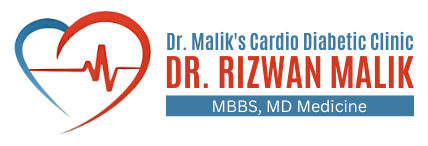Tuberculosis (TB) remains a major health challenge in India, accounting for about 27% of global cases and close to 2.8 million new infections in 2022 The National TB Elimination Programme (NTEP), formerly known as RNTCP, aims to eradicate TB by 2025 Modern diagnostic and treatment methods—molecular tests, shorter MDR-TB regimens, patient support, and monitoring—are transforming TB care. Let’s explore how.
2. Understanding TB: Pulmonary & Extra-pulmonary
TB is caused by the bacterium Mycobacterium tuberculosis Most cases (≈80%) involve the lungs—pulmonary TB—but it can affect organs like lymph nodes, bones, kidneys, and the meninges iplungclinic.com+3manipalhospitals.com+3en.wikipedia.org+3. Spread occurs when someone with active pulmonary TB expels droplets through coughing, sneezing, or speaking. Latent TB shows no symptoms, while active cases present cough (≥2 weeks), fever, night sweats, chest pain, weight loss, and fatigue
3. WHO Framework: NTEP “Detect – Treat – Prevent – Build”
Under NTEP, diagnosis and treatment are structured into four pillars:
- Detect: Early case finding
- Treat: Standardized treatment access
- Prevent: Contact screening, preventive therapy
- Build: System strengthening and social support
4. Modern Diagnostic Techniques
A. Sputum-based Smear Microscopy
Still widely used via designated microscopy centres (DMCs), with ≥99% sensitivity using multiple samples.
B. Rapid Molecular Tests
- CBNAAT (GeneXpert): Detects TB + rifampicin resistance in 2 hours
- Truenat (Molbio): Portable, battery-operated, endorsed by WHO since 2020
Both are recommended first-line tests, especially in high-risk (HIV, children, contacts)
C. Culture & Drug Sensitivity Testing (DST)
Liquid culture and line-probe assays in IRLs provide drug resistance profiles.
D. Imaging
Chest X-rays are used for screening, guided by molecular results .
E. Latent TB Detection
Tests like Mantoux or IGRA are used when needed, but not for active TB diagnosis
6. Standard Treatment Regimens
A. Drug-Sensitive TB (DS-TB)
- Intensive 2-month phase: Rifampicin, Isoniazid, Pyrazinamide, Ethambutol
- Continuation 4 months: Rifampicin and Isoniazid
B. Drug-Resistant TB (DR-TB)
- New NTEP/PMDT revised regimens using Bedaquiline, Delamanid, Linezolid; injectables phased out
- Shorter oral regimens like BPaLM (Bedaquiline + Pretomanid + Linezolid + Moxifloxacin) available under special programs; 6-month course shows high efficacy and fewer side effects
7. Patient Support & Adherence
- Nikshay Poshan Yojana: ₹1,000/month financial aid for nutrition
- eCompliance apps / DOTS: Digital biometric systems to ensure adherence
- Community mobilisation: Panchayats, ASHAs, NGOs educate and track patients
8. Contact Screening & Preventive Therapy
Close contacts—especially children and those with immune conditions—receive TB infection testing and preventive therapy to prevent progression
9. Urban Outreach & Public Health Initiatives
Cities like Delhi and Bhopal are implementing TB-Free Slum campaigns and mass screening with chest X-rays, NAAT tests, and diabetic screening to reach marginalized groups
10. National and Global Goals
NTEP is on track, with incidence down ~16% and mortality by ~18% from 2015-2022 The target: a TB-free India by 2025.
Treatment of TB in India has entered a modern era—rapid molecular diagnosis, effective oral regimens, digital adherence tools, and community support—balancing quality care, accessibility, and innovation. With public awareness, timely diagnosis, and adherence to treatment, India is moving closer to the goal of eliminating TB by 2025. If you or someone you know shows symptoms like persistent cough or weight loss, consult the nearest health centre
FAQs
Q1. What test confirms TB infection in India?
Modern molecular tests—CBNAAT or Truenat—are preferred first-line diagnostics, replacing slower sputum microscopy
Q2. How long does TB treatment last?
Drug-sensitive TB: 6 months. Drug-resistant TB: newer regimens (e.g., BPaLM) shorten treatment to 6 months, compared to older 18-month regimens
Q3. Is TB treatment free in India?
Yes. Under NTEP, TB diagnosis and treatment are free via public health centres. Nutritional support and patient tracking apps (Nikshay, eCompliance) enhance care .
